News
Clean Label? Old Hat. Enhanced Natural is the Way to Go
24 Sep 2013There once was a tussle between clean label and functionality, but no more. Today’s consumer expects the whole package – a natural product with functional properties which is also low in sugar and/or fat. And, if at all possible, it should also be free from gluten and lactose. Natural rules Consumer demand for ‘natural’ products […]

There once was a tussle between clean label and functionality, but no more. Today’s consumer expects the whole package – a natural product with functional properties which is also low in sugar and/or fat. And, if at all possible, it should also be free from gluten and lactose.
Natural rules
Consumer demand for ‘natural’ products shows no sign of abating. According to Euromonitor International’s health and wellness data, 39% of global health and wellness-positioned food and beverage value sales in 2012 were accounted for by naturally healthy (NH) products, followed by fortified/functional (33%) and better-for-you (BFY) offerings (23%).
The organics boom of the past two decades, which drove organic packaged food and beverage products to account for 8% of Western European and North American health and wellness sales in 2012, is also a blatant manifestation of the natural trend. It is also worth mentioning that despite the challenging economic climate, organic foods and beverages continued to grow in these geographies in 2012 – in Western Europe by 6% and in North America by 3%.
Unlike organic, however, the term ‘natural’ remains undefined by legislators. The food industry, of course, cannot afford to sit around and wait for official clarification. It has to react swiftly to changing consumer demands, which, in this case, have translated into the by now well-established ‘clean label’ movement.
The challenge of stripping foods of unfamiliar-sounding ingredients that might put consumers off purchasing a product is a formidable one. It has seen ingredients that are, on the face of it, entirely natural, like carmine (E120 in the EU), a red food colouring made from insects, and the innocuous hydrocolloid xanthan gum, being called into question and removed from many food products.
Natural plus functional plus BFY
Removing ‘suspect’ additives is still not enough, however. What we are seeing now is that besides hankering after ‘natural’ products, consumers also want functionality – they are demanding what may be termed ‘enhanced natural’ offerings.
Probably the most pertinent example of this is the escalating high protein trend, which has already catapulted Greek yoghurt to ‘It’ status in the US. Chobani (from Agro Farma Inc), ostensibly labelled as containing “only natural ingredients”, is now the US’s leading yoghurt brand with projected sales of US$1.7 billion in 2013, equating to a category value share of 21%, up from less than 1% in 2008.
Greek yoghurt is strained, which not only serves to make a low-fat yoghurt delectably creamy but also doubles its protein content compared to a standard yoghurt – two key points of attraction for the weight and/or fitness conscious. So, in effect, consumers are not just getting a natural product with functional properties, owing to its high protein content, but one that is also better for you (in terms of being low in fat).
Another manifestation of the enhanced natural trend is the rise of BFY reduced-calorie juices, like PepsiCo’s Trop50, marketed as “50% less sugar and calories, 100% pure, naturally sweetened”. Trop50 is positioned as a nectar, not a juice, as water has been added to dilute the juice base’s natural sugar content. A stevia-derived sweetener is added to re-establish the desired sweetness, allowing the product to retain its natural image and a clean label. Since its launch in 2009, Trop50 has climbed to the number two spot in the US nectar (25-99% juice) rankings.
Incidentally, our ingredients data show that the four sweeteners employed in soft drinks with the highest 2007-2012 review period growth – stevia, fructose, glucose/fructose syrup and sucrose – were all naturally derived.
Free from feeds into natural
Consumer expectations that a clean label product should also confer some sort of functionality do not stop there. To many, a clean label also signifies that a food or a beverage should be free from substances such as gluten, dairy, wheat, soy etc. This has given rise to the ‘free from’ trend, which is not entirely separate from the ‘natural’ trend at all – a significant overlap exists.
Our statistics show that, over the review period, gluten-free food topped the global health and wellness growth charts ahead of fortified/functional. In the US, value sales rocketed by 110%. Lactose-free food performed particularly well in Eastern Europe, Western Europe and Asia Pacific.
The free-from boom is in full swing, propelled in large part by consumers who are not medically diagnosed with conditions such as Coeliac disease or lactose intolerance but who believe that eschewing certain food components helps them to tackle a wide range of health issues such as fatigue, weight management, skin problems, etc.
Life for ingredients manufacturers is not about to get any easier. Finding acceptable substitutes for gluten, lactose and other such widespread food components which convey essential properties during the production process and upon the finished product is anything but easy to achieve. But in a world where value is eroding increasingly quickly, thanks to private label and me-too products shrinking the window of competitive advantage, food industry players cannot take their eyes off evolving consumer preferences, nor relax on the innovation front if they want to continue to thrive.
Related news

Oat Barista: Innovation for game-changing beverages
20 Nov 2025
Oat Barista is a clean label, sustainable, and innovative drink base specifically designed to create the perfect foam in one single ingredient.
Read more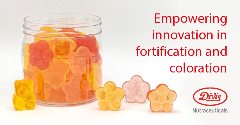
Empowering innovation in fortification and colouration
13 Nov 2025
Divi’s Nutraceuticals offers a large portfolio of innovative, high-quality ingredients for foods, beverages, and supplements, with bespoke solutions and expert support for product success.
Read more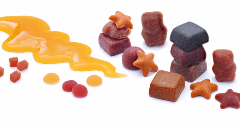
From fruit to functional solutions: Meet Paradise Fruits at Fi Europe in Paris
13 Nov 2025
Paradise Fruits Solutions and Paradise Fruits Health will showcase their combined expertise in delivering innovative, fruit-based solutions to the food and beverage industry at the upcoming Fi Europe trade show (2-4 December 2025, Paris).
Read more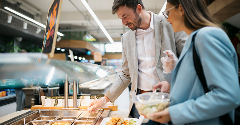
New UPF standard hoped to offer consumers ‘coherence and clarity’
10 Nov 2025
Ingredients companies are being urged to enter “a new era of partnership and innovation” following the launch of the industry’s first non-UPF verification scheme.
Read more
Cottage cheese makes a comeback as consumers call for cleaner labels
6 Nov 2025
From ice cream to dips and ready meals, cottage cheese is experiencing a renaissance as a high-protein, clean ingredient for health-conscious consumers.
Read more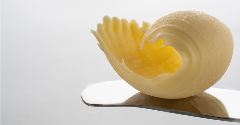
Bord Bia presents Irish dairy ingredient suppliers at Fi Europe
6 Nov 2025
Dairygold Co-operative Society, The Carbery Group, and Ornua Co-operative: Meet with sustainable producers of Irish dairy ingredients at Food ingredients Europe 2025, Hall 7.2 Stand M18.
Read more
Shorter drying time, sweeter success!
30 Oct 2025
Curious about cost-effective, sustainable and delicious candy making? Stefan Wessel reveals how Avebe’s solutions reduce drying time and energy use by up to 50%.
Read more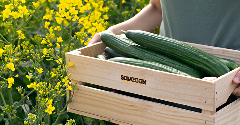
Could plant-based protection replace plastic packaging?
29 Oct 2025
Swedish foodtech company Saveggy has launched an additive-free plant-based protection for cucumbers, offering a waste-free packaging solution for fruit and vegetables.
Read more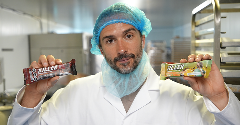
Will Wicks’ Killer Bar harm the protein bar category?
23 Oct 2025
Joe Wicks’ deliberately dangerous protein bar is fuelling anti-UPF sentiment – but there are concerns that his messaging is misguided and could have unintended consequences.
Read more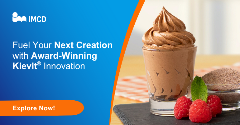
Expanding boundaries in food & beverage innovation
23 Oct 2025
IMCD and FrieslandCampina Professional expand partnership to deliver Kievit® across EMEA, enabling brands to enhance quality and accelerate time-to-market for tomorrow’s food & beverage creations.
Read more